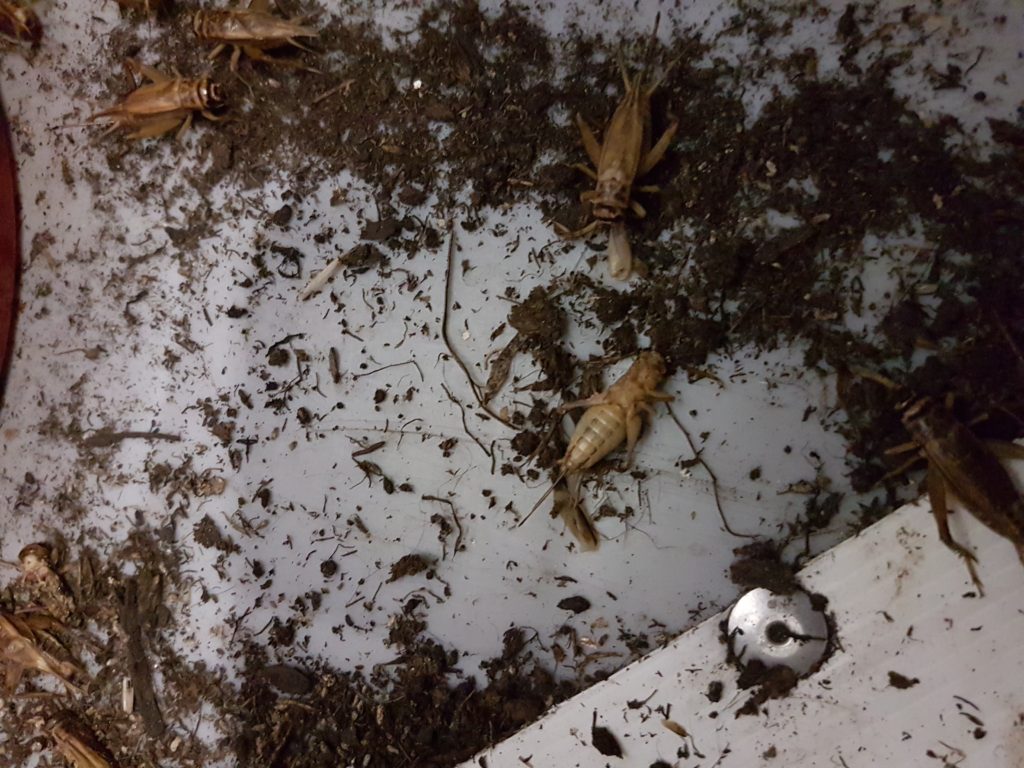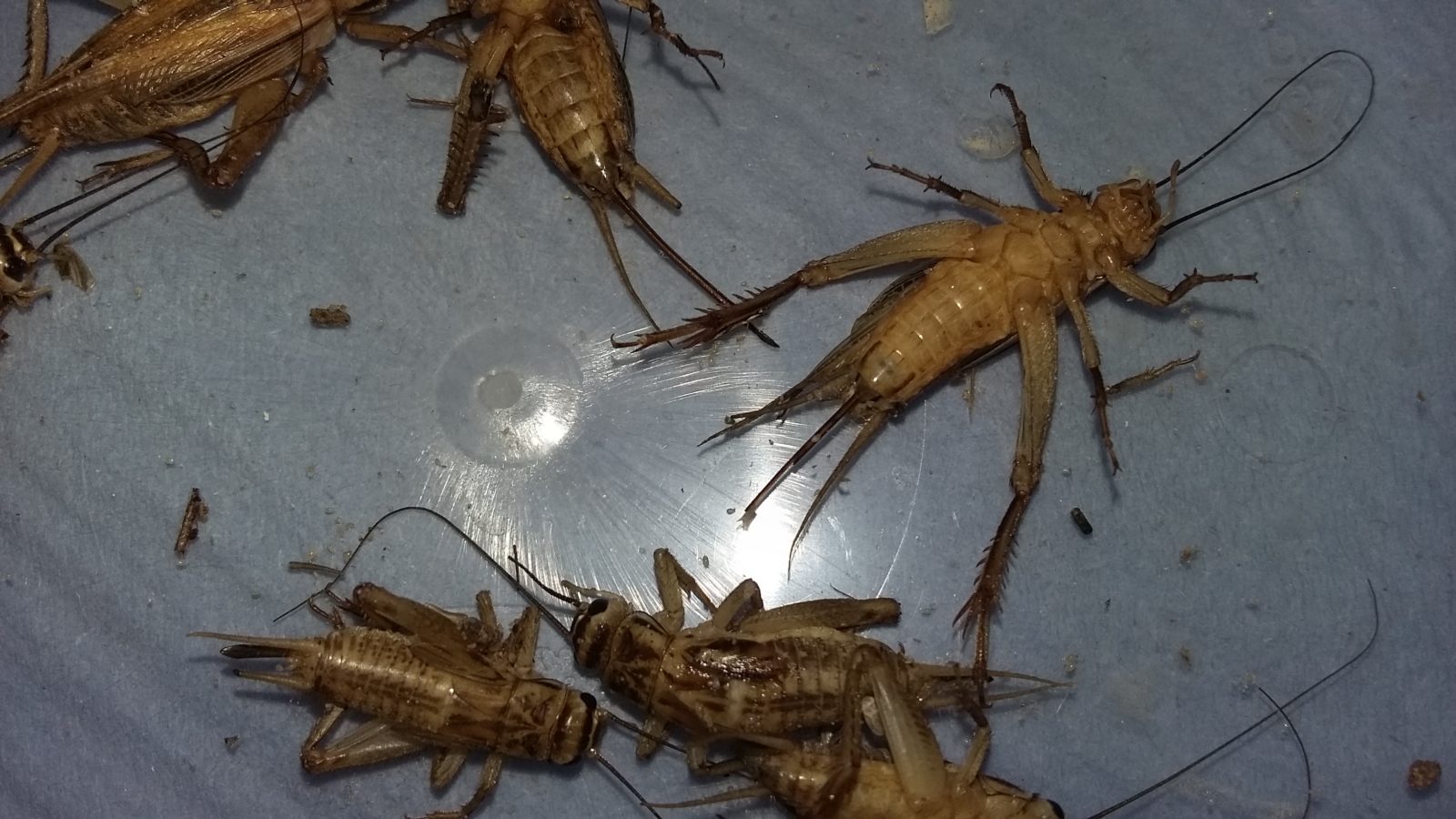A Method for the Eradication of Virus From Cricket Colonies
Colonies of the brown house cricket Acheta domesticus have been significantly affected by Acheta domesticus Densovirus across Europe and North America over recent years. In addition, a second virus, Cricket Paralysis Virus (CPV), has also established in many colonies of A. domesticus as well as other species.
The symptoms of the virus are similar, in that crickets become paralysed and, after a few days die. The infected crickets die throughout their nymphal development an, as a result, perhaps 80-90% of crickets die before adulthood. Adults that do survive are infected with the virus and, although they will breed, the next generation rapidly becomes infected and the colony becomes trapped in a cycle of low productivity.
The presence of these viruses have caused major problems in the industry, not least as no satisfactory means of preventing infection of crickets has been developed. Insects within affected colonies yield virus in such quantities that entire buildings and all items contained therein become contaminated with virus particles, making prevention of infection impossible using available procedures (disinfecting etc.). Many cricket producers have been driven out of business due to the absence of a viable solution to the problem.
Recently, a colony of A. domesticus was established In the UK for commercial purposes that inadvertently used insects derived from an virus-infected colony maintained by a live-foods producer. Insects exhibited the effects of CPV and around 80% of nymphs became paralysed and died. The facility could not be moved and alternative species were considered inferior and, as a result, a procedure to circumvent the impacts of the virus was developed. This procedure seeks to delay infection of nymphs in order that the fitness of the breeding colony is increased and infection rates markedly reduced. The procedure does not remove the virus from the colony entirely but instead minimizes its impact so that losses of insects are reduced to tolerable levels and economic viability is restored. The procedure has been validated with successful outcomes on commercial cricket farms in the UK and Europe.
The procedure we have developed restores cricket colonies to full production without the need to take drastic action regarding the affected facility. The procedure needs to be continually implemented at first until virus incidence disappears. The procedure can then be used on a routine basis as a preventative measure.
If you are interested in knowing how to cure your virus problems in your colony, contact us. The procedure will save your colony and help keep it economically viable.
Ready to find out more?
Drop us a line today for a free quote!



